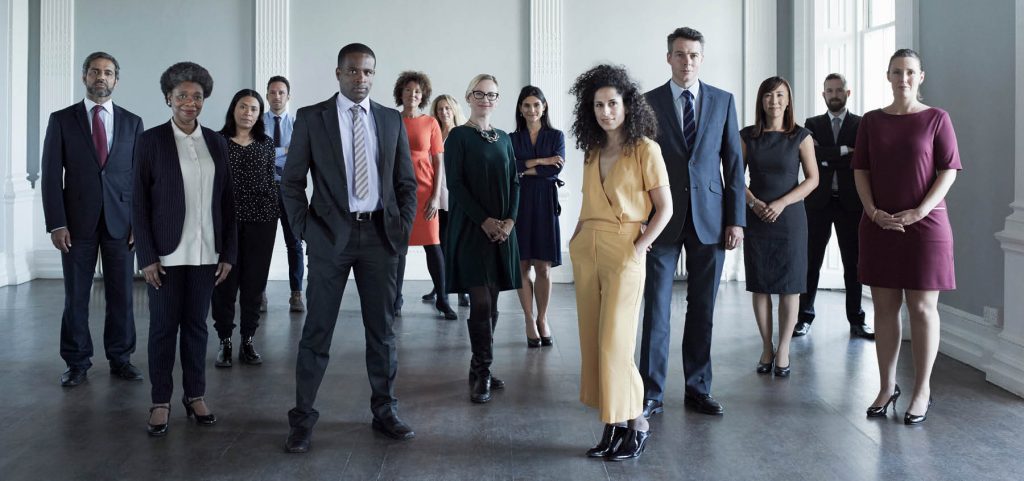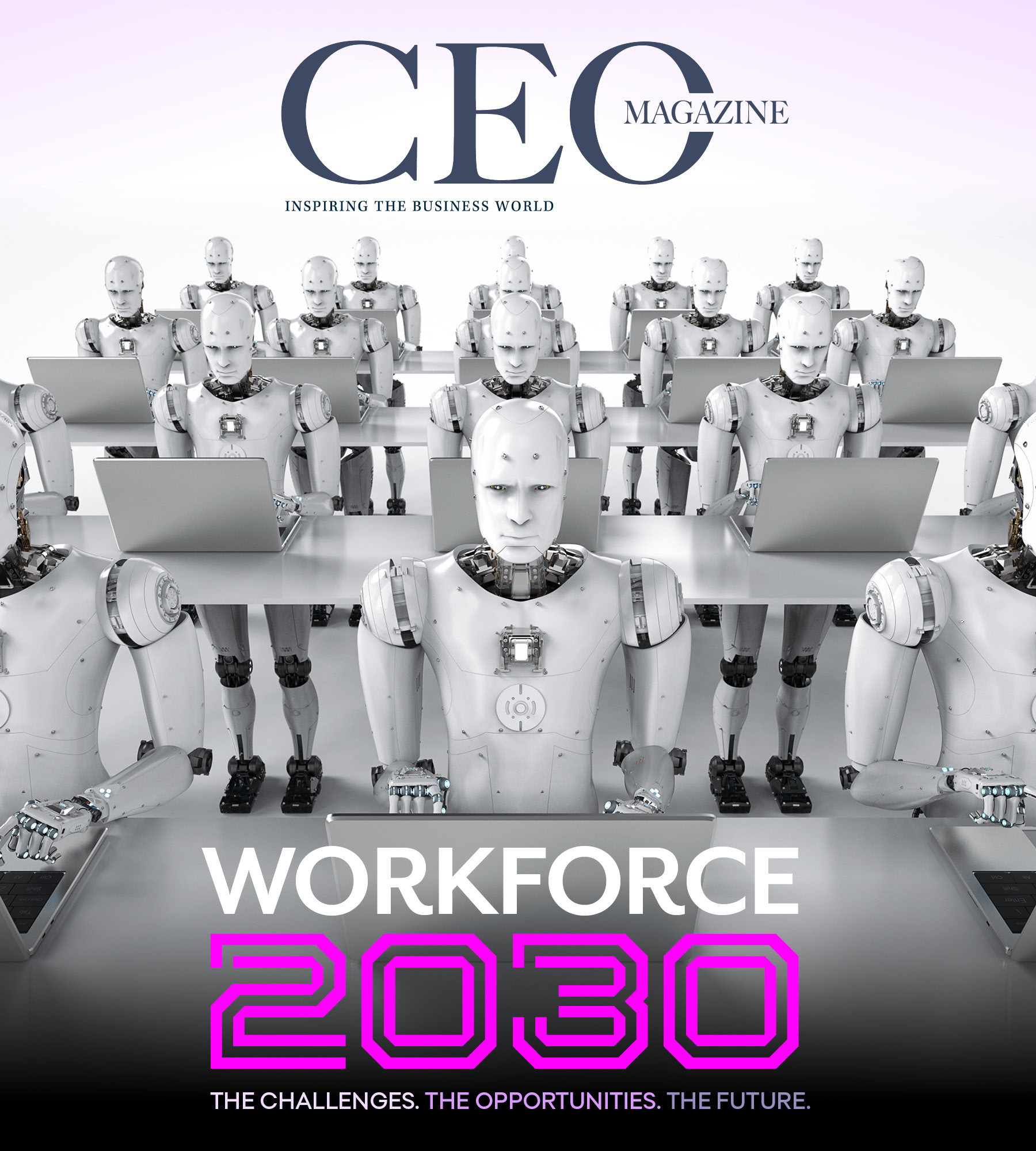Language
You can read the magazine in one of the following languages
With the backdrop of a snowless Davos, a fitting metaphor for the urgent issues global leaders had come together to address at January’s annual World Economic Forum meeting in Switzerland, PwC unveiled the results of its 26th ‘Annual Global CEO Survey’.
After speaking to more than 4,000 CEOs in over 100 countries and territories, the headline finding was ‘evolve or die’.
“Forty percent of CEOs said that if they don’t adapt and change, their organization is not going to be economically viable in the next 10 years,” says Peter Brown, PwC’s Partner and Global People & Organization Leader, speaking to The CEO Magazine in the days after the report’s release.
Brown understands that from navigating the after-effects of the COVID-19 pandemic to war in Europe and the global recession many are predicting, leaders have immense short-term issues to deal with.
But he also stresses what the report refers to as the ‘dual imperative’ of focusing on the longer term. “Every organization must transform to maintain competitive advantage and to be relevant to both their customers and their employees,” he says.
It’s hardly a secret that we’re seeing a fundamental transformation in the way we work. The era of machines that can do the tasks and jobs of humans isn’t some Hollywood sci-fi fantasy – it is already here.
According to an analysis by McKinsey & Company, between 39 and 58 percent of activities in what are deemed ‘operationally intensive’ sectors, such as manufacturing, transportation and retail, could be automated using current technologies. It’s a shift that COVID-19 has only served to accelerate.

However, while organizations around the world have been grappling with how jobs will evolve and what that means for employees for the past decade or so, the COVID-19 pandemic also threw up another curveball. It ushered in new ways of working and imprinted terms like the Great Resignation and ‘quiet quitting’ on our consciousness.
“Employees today have different needs than those of yesterday,” says Katy George, Chief People Officer at McKinsey. “In addition to flexibility, employees are looking for connections and a clear career path.”
Rachel Fellowes, financial services company Aon’s Chief Wellbeing Officer, agrees, arguing that as talent continues to demonstrate increased selectivity of where they want to work and what types of companies they want to work for, businesses need to be conscious of it.
“Organizations that continue to lean into flexible options like a hybrid workplace will have an advantage in this competitive talent landscape,” she suggests.
“People want to be fairly paid, to have meaningful work and to work for an organization that aligns with their own personal values and that allows them to be themselves,” Brown adds. “They are rebalancing their work and personal life.”
George believes the long-term results of these shifts will see a more hybrid, empowered and digitally skilled workforce emerge by 2030.

PwC’s Four Worlds of Work explained:
THE RED WORLD, or Innovation Rules
Innovation outpaces regulation and organizations are pared back and agile as they race to give consumers what they want. Projects are started and completed at speed, with technology and data playing a significant role. Specialist talent remains only as long as the project takes, connecting to digital platforms in search of the next opportunity.
THE YELLOW WORLD, or Humans Come First
Meaning is the driver for both companies and people in the yellow world, one where humanness is the major currency and crowdfunded capital is directed toward ethical brands. The concept of work is fluid, with the nine-to-five, Monday-to-Friday model increasingly rare.
THE GREEN WORLD, or Companies Care
Corporate responsibility is fundamental to doing business in the green world. Social conscience, environmental responsibility and a focus on diversity and human rights are key markers. Workers seek out employers who they look up to and whose values match their own.
THE BLUE WORLD, or Corporate is King
Capitalism rules with a belief that bigger is better as organizations continue to grow to such an extent that some become bigger than national economies. The best talent is well rewarded, but may need to take physical and medical enhancements to stay at the top. Individual preferences come before social responsibility.
The CEO Magazine’s CEO, David Jepson, argues that there’s every chance the word ‘workforce’ may no longer even be relevant by then. “The idea that humans have to do tasks for a set wage will be fundamentally challenged,” he argues.
“As the advancement of AI enables us to access increased amounts of information, and as robotic innovations allow us to delegate most of our daily tasks, we will have a lot more time to focus on value creation and innovation.”
It’s something, he adds, we are already seeing play out in gen Z, a generation that he believes “demand to be given the freedom to be creative and entrepreneurial”.
“It’s a trend that will continue to strengthen,” he predicts.

We might not have a crystal ball to see with clarity what tomorrow’s world of work will look like, but we do know that the intersection where technology and talent meet will play an integral role in shaping it.
Here, these experts share their advice for business leaders preparing for the workforce of the future:
“If a job can be automated, it will be,” PwC’s Brown says. “You could fight it, but your competitors won’t.”
However, he adds that organizations with purpose will help their people by equipping them with new skills to maintain relevance in the world of work. And this is a factor already playing on employees’ minds
In PwC’s ‘Workforce of the Future: The Competing Forces Shaping 2030’ report, 37 percent of respondents polled were concerned that their role is at risk from automation, while 74 percent were ready to reskill or retrain to remain employable.
“When leaders think of teamwork and culture, science can be a powerful mechanism to inform strategic decisions that produce measurable outcomes down to the team and individual level,” McKinsey’s George says.
“At McKinsey, we’re using data points to identify and support teams that are struggling, and we analyze how teams operate through a project to understand what is differentiating high-performing teams from the rest.
“This is an approach that can work for leaders across all industries so they can better understand, and meet, the needs of their workforce.”
“It is increasingly critical that leaders consider how diverse and inclusive makeups deliver strong results,” George explains. “Rather than hiring a team that attended the same schools or has the same type of on-paper pedigree, expand where and how you recruit talent to include diverse sets of backgrounds.
“For example, expand the recruitment process to include larger pools of academic programs, military experience, or specialized skills like coding or medicine. These will all bring new perspectives to your team.”
“It’s important to look at the direct link between employee wellbeing and business performance – and the impact that healthy, resilient employees can have,” Aon’s Fellowes points out.
“Employees bring their best selves to work when wellbeing, individual resilience and human sustainability are prioritized by both employees and employers. Wellbeing is not a ‘one and done’ task and must incorporate listening, data analysis and evolution.
“To be effective in today’s environment, wellbeing needs to be an adaptable, data-informed people and performance strategy where tools, programs and resources align to culture and employee needs.”
Brown also underlines the importance of what he and his colleagues at PwC are calling ‘no regret moves’.
“You’ve got to take some calculated risks and no regret moves,” he says. “There’s no exact answer, but doing nothing is probably not the answer, either.”

United Kingdom-based Brown was one of the contributors to the ‘Workforce of the Future’ report and together, the authors presented four possible worlds of work scenarios for 2030 based on five megatrends identified as shaping the future: technological breakthroughs; demographic shifts; rapid urbanization; shifts in global economic power; resource scarcity; and climate change.
The purpose of these hypothetical worlds isn’t to predict for certain what tomorrow’s workforce would look like (as the report emphasizes, “the future isn’t a fixed destination”), rather to serve as a starting point to planning multiple, ever-evolving and dynamic scenarios.
“It’s not to say you’re going to fit into one of these four boxes,” Brown explains. “Rather to stimulate action and provoke thought considering the big megatrends that are impacting us as human beings.”
What is also clear is that there are a new set of skills rising to prominence. “As digital becomes a core foundation to all business models – not a function or team of technologists – companies have shifted their mindset on skills,” says Michael Burke, Aon’s CEO of Human Capital Solutions.
While hard technical skills are still in demand, he highlights a shift in focus to softer skills: problem-solving, curiosity, agility and resilience – or, as he puts it, the skills that are ‘challenging’ to develop.

Top 10 skills of 2025, according to the World Economic Forum:
• Analytical thinking and innovation,
• Active learning and learning strategies,
• Complex problem-solving,
• Critical thinking and analysis,
• Creativity, originality and initiative,
• Leadership and social influence,
• Technology use, monitoring and control,
• Technology design and programming,
• Resilience, stress tolerance and flexibility, and
• Reasoning, problem-solving and ideation.
“If the average half-life of skills has dropped to under five years, the ability for employees to reskill, and workforces to adapt, will be greatly influenced by the abundance of these softer skills,” Burke continues. “Reskilling is the cost-effective way to futureproof your workforce, but is also needed to empower and engage employees and support them in their wellbeing.”
By 2025, 85 million jobs are at risk of being displaced by technological advancements. But at the same time, 97 million new roles may emerge that will be adapted to a new division of labor divided by humans, machines and algorithms, according to the World Economic Forum.
Because as George puts it plainly: robots need humans.
“Contrary to headlines about machines taking jobs, technology actually creates more jobs. Our findings conclude that by 2030, the share of physical and manual tasks in the overall economy will have fallen by about 27 percent since 2016, replaced by greatly increased demand for technological and cognitive skills,” she says.
And the message for business leaders is clear, she adds. “Employers need to become skill-builders and develop the workforce needed to remain competitive while helping all people access meaningful and lasting employment.”

